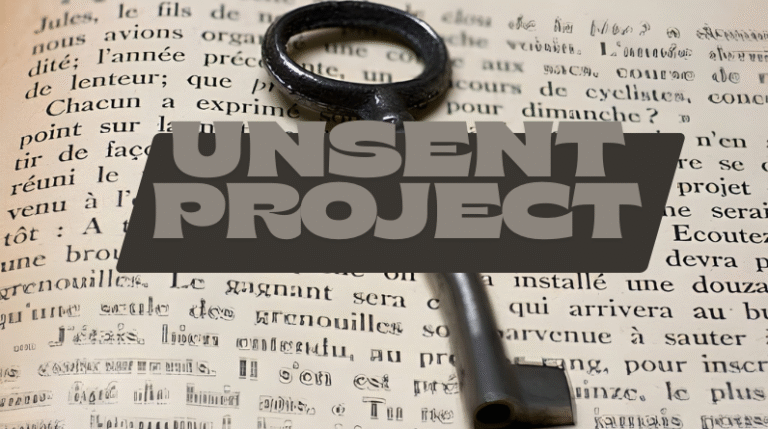In an era where we send billions of text messages daily, there exists a parallel universe of messages that never reached their intended recipients. The Unsent Project has captured this phenomenon, creating a digital sanctuary for over 5 million text messages that were written, considered, but ultimately never sent. This remarkable platform offers more than just a collection of unsent texts; it provides a mirror reflecting our collective experience with love, loss, and the words we wish we had said.
What Makes The Unsent Project Unique in Digital Storytelling
Created by Rora Blue in 2015, The Unsent Project began with a simple yet profound question: what color do people associate with love? This artistic inquiry evolved into something far more significant. The platform became a global repository where individuals could anonymously submit the final message they never sent to their first love.
What distinguishes this project from typical social media confessionals is its focused intimacy. Unlike platforms where people share every fleeting thought, The Unsent Project captures a specific moment: the pause before hitting send, the decision to remain silent, the weight of words left unspoken.
The Anatomy of an Unsent Message
Each submission appears as a colored speech bubble, reminiscent of post-it notes scattered across a wall. The visual presentation is deliberately simple, allowing the words themselves to carry the emotional weight. Messages range from a few words to longer paragraphs, each one representing a crossroads where someone chose silence over expression.
The Psychology Behind Unsent Messages: Why We Don’t Hit Send
Understanding The Unsent Project requires examining why people write messages they never intend to send. Psychological research reveals several compelling reasons:
The Therapeutic Value of Unexpressed Communication
Writing unsent letters has been a recognized therapeutic technique for decades. Mental health professionals often encourage clients to write letters to people they cannot or should not contact. This practice allows individuals to:
- Process complex emotions without fear of judgment or response
- Gain closure without reopening old wounds
- Articulate feelings that seem too vulnerable to share directly
- Release emotional burdens without risking further conflict
The Unsent Project democratizes this therapeutic practice, transforming private catharsis into collective healing. When you read that someone else wrote “I don’t know what my heart did before it loved you,” your own unspoken feelings find validation.
First Love and the Neuroscience of Attachment
The platform’s focus on first loves taps into powerful neurological realities. First romantic experiences trigger the release of oxytocin, which creates intense feelings of attachment and bonding. Simultaneously, dopamine floods the brain’s reward centers, creating patterns that neuroscientists compare to addiction.
This biochemical cocktail explains why first loves leave such lasting impressions and why, years later, people still have words they wish they had said. The Unsent Project becomes a digital monument to these formative experiences that reshape our understanding of love and loss.
Decoding The Color System: The Emotional Spectrum of Love
One of The Unsent Project’s most distinctive features is its color categorization system. Messages are sorted into eleven colors, each representing the emotional tone the sender associated with their experience. This system offers fascinating insights into how different people process similar experiences.
| Color | Emotional Association | Common Message Themes |
|---|---|---|
| Red | Love, passion, gratitude | Expressions of enduring love and thankfulness |
| Black | Darkness, despair | Messages about toxic relationships and deep pain |
| Blue | Calm, sadness | Reflective messages about what could have been |
| Green | Hope mixed with melancholy | Optimistic yet wistful reflections |
| Purple | Pain intertwined with positivity | Growth narratives and lessons learned |
| Pink | Effort without reward | Unrequited love and one-sided relationships |
| Yellow | Loss with positive outlook | Acceptance and moving forward |
| White | Nostalgia, wishing things unchanged | Longing for the past |
| Grey | Pain with understanding | Mature reflections on complicated situations |
| Orange | Unexpected turns | Surprise endings and sudden changes |
| Brown | Less intense situations | Gentle disappointments and mild regrets |
This color coding serves dual purposes. For submitters, choosing a color adds another layer of emotional processing. For readers, it provides a way to navigate the archive based on their current emotional state or the type of story they want to encounter.
How to Navigate The Unsent Project: A User’s Guide

Exploring The Unsent Project can be both captivating and emotionally challenging. Here’s how to make the most of your experience:
Searching by Name
- Visit theunsentproject.com
- Locate the search bar at the top of the homepage
- Enter a name (yours, someone you know, or simply out of curiosity)
- Browse through hundreds or thousands of submissions
- Note that loading may take time due to the massive archive
Popular names like “Alex,” “Ava,” and generic terms like “You” have thousands of entries, offering a cross-section of human experience tied to those identifiers.
Browsing by Color
If you’re seeking messages with particular emotional tones, use the archive’s color filter. This approach allows you to explore messages aligned with your current mood or to deliberately seek perspectives different from your own experience.
The Comparison Feature
An intriguing aspect of the platform pairs multiple messages side by side, creating unintentional conversations between strangers. These juxtapositions often reveal universal patterns in how people experience and articulate heartbreak, longing, and closure.
Beyond Romance: The Expanding Definition of First Love
While The Unsent Project initially focused on romantic first loves, the platform has organically expanded to encompass a broader interpretation of that concept. Users now submit messages to:
- Friendship first loves: Best friends who drifted away or relationships that ended painfully
- Parental figures: Messages to parents, expressing emotions too complex for direct conversation
- Lost loved ones: Words for those who have passed away
- Unrequited loves: Feelings for someone who never knew they existed
- Self-directed messages: Words to younger selves or current selves during difficult times
This expansion reflects a mature understanding that “first love” isn’t always romantic. It can be the first person who made you feel seen, the first relationship that fundamentally changed you, or the first loss that taught you about grief.
The Viral Impact: From Niche Project to Cultural Phenomenon
The Unsent Project’s growth from an art project to a platform with over 276,000 Instagram followers and millions of website visitors demonstrates its cultural resonance. The project went viral through social media, particularly on TikTok and Instagram, where users share screenshots of messages that resonate with them.
Statistical Snapshot
- Total submissions: Over 5 million messages
- Instagram followers: 276,000+
- Year founded: 2015
- Global reach: Submissions from worldwide contributors
- Available platforms: Website, Instagram, mobile app (Google Play)
The platform’s authenticity drives its popularity. In an age of curated social media personas, The Unsent Project offers raw, unfiltered emotion without the expectation of likes, comments, or performative vulnerability.
Alternatives and Related Platforms
The success of The Unsent Project has inspired similar initiatives, each with unique approaches to unexpressed communication:
Space Email
This platform allows users to compose email-style messages that exist in a virtual space rather than being sent to recipients. It’s ideal for longer, more detailed expressions that don’t fit the text message format.
After The Beep
Created by Rora Blue, the same artist behind The Unsent Project, this platform uses voice instead of text. Users record and upload unsent voicemails, adding vocal tone and emotion that text cannot capture.
The Therapeutic and Social Value of Shared Silence
Perhaps the most profound aspect of The Unsent Project is what it reveals about collective human experience. Reading through the archives, patterns emerge that transcend individual circumstances:
Universal themes include:
- The desire for closure that never came
- Regret over words left unspoken
- Gratitude for experiences, even painful ones
- The struggle between holding on and letting go
- Recognition of personal growth through loss
One message captures this perfectly: “I really don’t want you to be just a memory.” This sentiment, expressed in thousands of variations across the platform, speaks to the human resistance to accepting that significant relationships can end.
Is The Unsent Project Right for You?
Consider engaging with The Unsent Project if you:
- Have words you need to express but cannot or should not send
- Seek validation that your emotional experiences are shared by others
- Want to process feelings about past relationships in a safe, anonymous space
- Are interested in the intersection of art, technology, and human emotion
- Need reminders that healing is possible and universal
However, be mindful that browsing messages can be emotionally triggering, particularly if you’re currently navigating fresh heartbreak or unresolved grief.
The Future of Digital Emotional Archives
The Unsent Project represents a new category of digital platform: emotional archives that serve both individual therapeutic needs and collective cultural documentation. As it continues growing, the platform becomes an increasingly valuable resource for understanding how contemporary people experience and process love and loss.
Future developments could include academic research partnerships studying patterns in submission data, exhibitions bringing the digital archive into physical spaces, or expanded features allowing more nuanced emotional categorization.
Final Thoughts: The Power of Words Never Spoken
The Unsent Project proves that sometimes the most powerful messages are those we never send. In choosing not to transmit these words, we protect ourselves, respect boundaries, or simply acknowledge that some feelings are meant to be processed rather than shared.
Yet by contributing these unsent messages to a collective archive, individuals transform private pain into shared understanding. Each submission says, “I felt this. Maybe you did too. You’re not alone.”
In that transformation lies the project’s true genius: turning silence into conversation, isolation into community, and unsent messages into universal truth. Whether you submit your own message or simply read those of others, The Unsent Project offers a unique space to explore the complex landscape of human connection and the eloquent power of words that were almost, but never quite, sent.
Looking for well-researched content and timely updates? Keep visiting VIPLeague.

